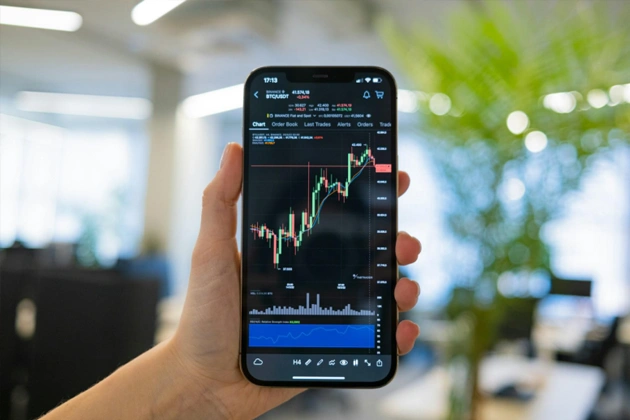Position sizing is not about conviction or intuition. It’s about defining risk and determining how much of something to buy, long before figuring out what that ‘something’ is. It starts with a limited drawdown. There should be only so much room for a daily loss and a repeatable formula guaranteeing you weather hundreds of trades.
If you want to make position sizing decisions that are based on risk but allow you to size across different markets, even in the presence of randomness, the easiest way to convert a risk budget into actual dollar and cent position sizes is with a Position Sizing Calculator. An effective calculator will incorporate volatility and liquidity while also clustering effects.
Start With a Risk Budget, Not a Stock Pick
A professional risk framework begins with capital and maximum drawdown acceptance. If you have a $5,000,000 portfolio and an 8% drawdown cap, it means that you are allowed no more than $400,000 worth of risk. Within that, there should be a daily loss ceiling of 10% of the drawdown ($40,000).
This stops the madness before emotions work their way in. Such structure requires traders to set up front how much they are willing to lose, removing the emotional bias that comes with so-called revenge trades or doubling up after a losing streak. With these limits in place, position sizing becomes automatic, not a reaction to market noise.
From Risk per Trade to the Right Number of Shares
Next comes the granular part: translating portfolio risk into a per-trade figure.
A proven rule of thumb is: risk per trade = min(0.25% of equity, 25% of daily loss limit).
In our $5 million example:
- 0.25% of equity = $12,500
- 25% of daily loss = $10,000
→ Use $10,000 risk per trade.
If the entry price of a trade is $100 and the stop-loss is $95, that means the per-share risk amounts to $5.
Divide 10,000/$5 = 2,000 shares.
The next order of business is a liquidity check; if 2,000 shares is too big for the market’s average daily volume, the size of the position must be scaled back before it can be executed. Rounding down is a feature, not a flaw. It ensures that size can never exceed what the market can reasonably absorb.
Keep Correlated Bets Under One Roof
Diversification does not mean owning ten tickers that all move together. Correlated trades are like one big bet. One way to deal with this is to group holdings by sector, industry, or macro theme. If you have semiconductor or renewable energy plays, limit each basket to 3× risk per trade. In continuing the example, that’s 3 × $10,000 = $30,000 of total cluster risk.
If you already hold three semiconductor names totaling that $30,000 limit, a fourth name in the same theme gets zero size until one position is closed or reduced. This keeps portfolio risk truly diversified, even when ideas seem unrelated on the surface.
Let Volatility Dictate Your Size
Your size and position size ought to shrink according to volatility, not whim. The Average True Range (ATR) provides a tidy way to quantify how turbulent the market is.
- Use a volatility scaler: Target ATR divided by Current ATR = Position size multiplier.
When your model assumes a 2.5% base ATR, and the actual current ATR rises to one that is double the size at 5%, then the size multiplier would be half. This rule prevents outsized bets in chaotic markets and allows size to expand smoothly as volatility normalizes. It’s the difference between survival and margin calls when markets suddenly move 4% in an hour.
Respect Liquidity and Slippage
No matter how great your model is, it’s not worth anything if you can’t run it in a way that works. Liquidity is what you can trade, not what you want to be able to trade. Most liquidity problems are easily addressed with two basic guardrails:
- Maintain nothing greater than 2% of ADV.
- Stop increasing size when slippage becomes equal to half a bid-ask spread.
For example, if a particular stock has an ADV of 1,000,000 shares, the position cap would be 20,000 shares. If the spread is $0.02 and you’re losing more than a penny on fills, reduce your order size until slippage returns below the $0.01 threshold. Liquidity and execution discipline matter more than entry timing; getting filled at a bad price will bleed edge faster than a bad idea.
Build Simple Guardrails for Drawdowns
All systems require a brake, one that is automatic and responds to the pain itself. A traffic light system ensures this process is simple and visible:
- Green: Less than 4 percent drawdown, function as normal.
- Yellow: 4%-8% drawdown — halve position sizing and cluster limits.
- Red: Over 8% — don’t issue any new positions; manage what you have.
If the daily loss limit is reached, trading ceases for the day, no exceptions. These rules prevent minor pullbacks from turning into existential drawdowns. Traders who follow them remain in business long enough to recoup losses.
What Five Losing Trades Teach You
| Risk per Trade | Losses in a Row | Approx. Drawdown |
| 0.25% | 5 | ~1.24% |
| 0.50% | 5 | ~2.48% |
| 1.00% | 5 | ~4.90% |
| 2.00% | 5 | ~9.61% |
Five losers in a row doesn’t seem like the end of the world until your risk per trade is cut in half. The compounding effect shows why professional traders rarely exceed 0.5% risk per position. Position sizing is the lever that controls drawdown velocity.
Common Mistakes Smart Sizing Prevents
These aren’t theoretical rules of thumb; they’re what prevent professional trading desks from blowing up during regime shifts or liquidity droughts.
- It prevents traders from oversizing positions they “love.”
- It treats correlated tickers as a single bet, so that there is no masked concentration.
- It reduces risk when volatility jumps, holding constant exposure.
- It is ADV and spread respecting, which means trades are still opposable.
- It imposes discipline under drawdown and doesn’t let a death spiral set in.
Closing Thoughts
Position sizing is a capital commitment factor, not an after-the-trade consideration. It makes every idea line up and compete for scarce risk capital. When done properly, it removes the emotional bias of whether you “feel right” about a trade. Leaders who consistently apply this framework don’t guess or gamble. They work within an established boundary where probability can be realized.










